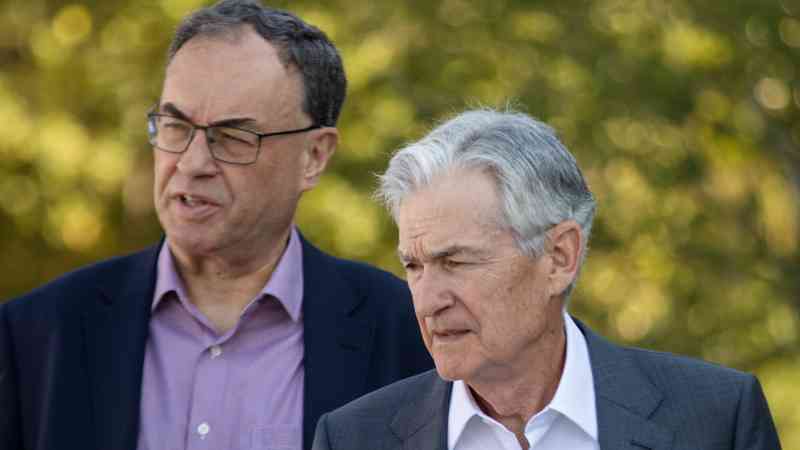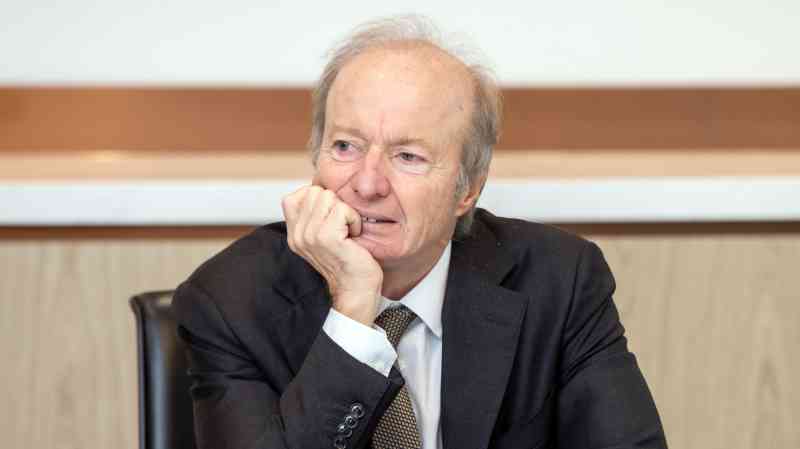US markets near record highs after Fed chairman’s rate cut hint
America’s stock indices closed in on record highs and the pound hit a two-year peak against the dollar after the head of the US Federal Reserve said “the time has come” to cut interest rates.
Jerome Powell, chairman of the US central bank, said the risks of higher inflation were diminishing amid a weakening labour market, allowing the Fed to cut rates for the first time since 2020 in September. Andrew Bailey, the governor of the Bank of England, did not offer signals of another rate cut in Britain, pushing up the pound against a weakening dollar.
Speaking at the exclusive Jackson Hole symposium in Wyoming, Powell said: “The time has come for policy to adjust. The direction of travel is clear and the timing and pace of rate cuts will depend on incoming data, the evolving outlook and the balance of risks.”
In an overwhelmingly doveish speech, he said “cooling in labour market conditions is unmistakable” and that slowing jobs growth meant “it seems unlikely that the labour market will be a source of elevated inflationary pressures any time soon. We do not seek or welcome further cooling in labour market conditions.”
Boosted by the prospect of a cut in the cost of borrowing from mid-September, indices just failed to break new ground with their second highest finishes in history. The S&P 500, widely regarded as a barometer on the health of corporate America, closed up 1.1 per cent at 5,634.61 in New York on Friday, moving towards its record close of 5,667.20 in mid-July. The Dow Jones industrial average also rose 1.1 per cent, to 41,175.08, compared with its closing high last month of 41,198.08.
After Powell pledged to do “everything we can to support a strong labour market”, traders put the odds on a 25-basis-point cut in the interest rate range from the present 5.25 per cent to 5.5 per cent at almost 68 per cent. The chances of a 50-basis-point reduction rose slightly to nearly 35 per cent.
Stephen Brown, deputy chief North America economist at Capital Economics, a consultancy, said Powell’s pledge “implies that a 50-basis-point cut could be on the table at the September meeting, although such a move might require a further rise in the unemployment rate in the August Employment Report, which we judge to be unlikely”.

Nigel Green, the head of deVere Group, one of Britain’s biggest independent financial advisory firms, said: “A small cut might signal a shift, but it won’t deliver the jolt needed to prevent a potential hard landing. It’s time for the Fed to act boldly, to cut rates aggressively and to send a clear message that it’s ready to do whatever it takes to keep the US economy on track. A 50-basis-point cut in September would send a powerful message to the market.”
The dollar, which had been weakening in anticipation of imminent monetary easing, fell by another 0.7 per cent against a basket of leading currencies to a 13-month low. The pound strengthened by 1 per cent against the greenback to $1.32, its highest level since April 2022. The dollar is on course to suffer its third largest monthly decline in three years in August.
Yields on two-year US government bonds, which are sensitive to changes in monetary policy, fell by eight basis points to 3.9 per cent and by six basis points on ten-year treasuries to 3.79 per cent. The spot gold price rose by 1 per cent to $2,508.25 after hitting a record high of $2,531.60 on Tuesday.
The Fed is the only big central bank that has yet to cut interest rates after the European Central Bank and the Bank of England began loosening policy this summer. In a speech at Jackson Hole, Bailey, the Bank governor, said it was “too early to declare victory” over inflation in Britain, even as the degree of stickiness in prices had weakened over the year.
“We are seeing a lower level of inflation persistence than we expected a year ago, but we need to be cautious because the job is not completed,” Bailey said. “Market events like those of two weeks ago or so will happen. The test is not whether they happen, but whether they trigger wider instability.”




Post Comment